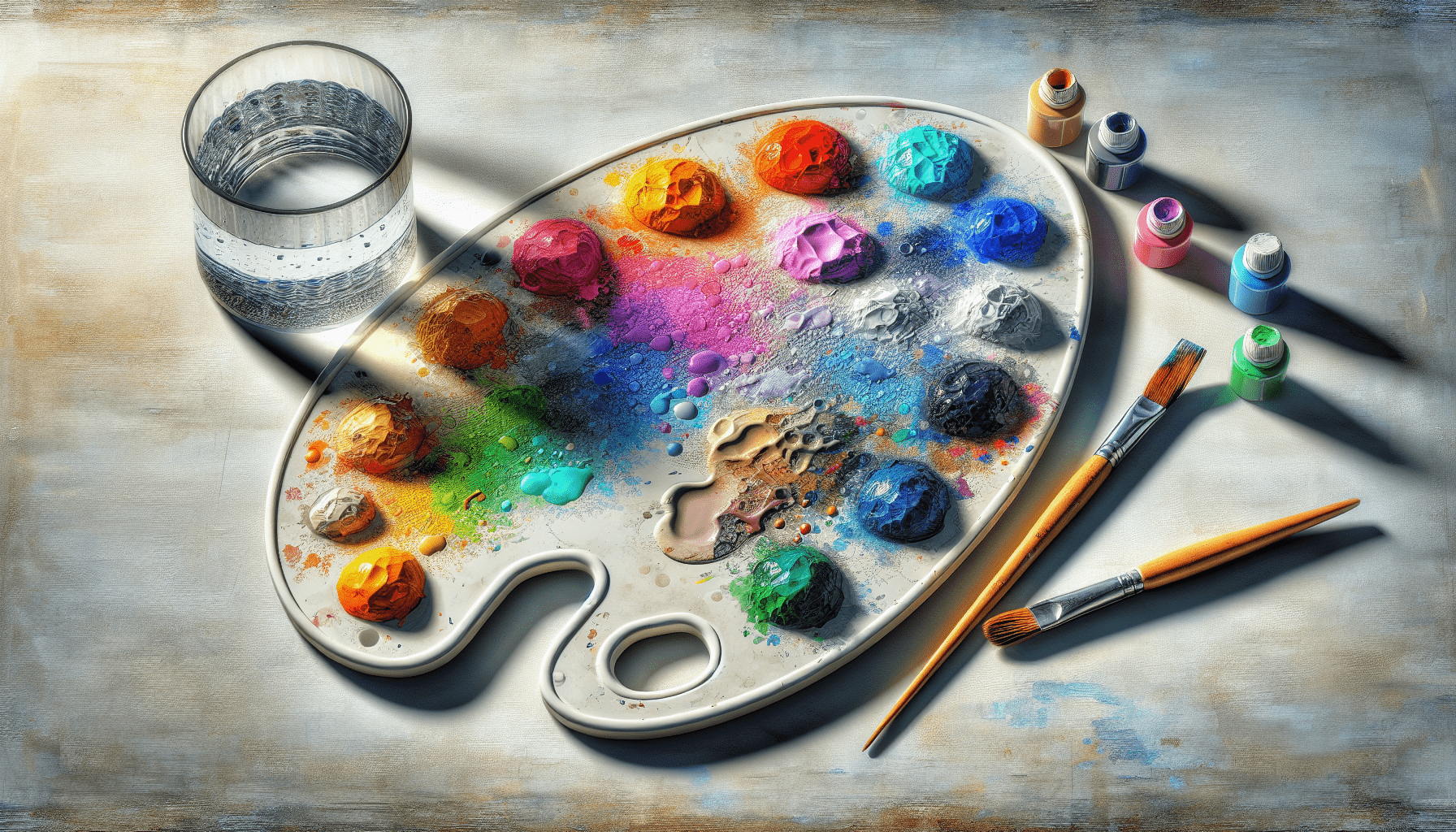Have you ever wondered how long it takes for poster paint to dry? Understanding the drying time of poster paint is essential for any activity that involves creating visual art. Whether you are an art enthusiast, a classroom teacher, or a parent overseeing a creative craft session, knowing this crucial piece of information can impact the outcome of your project significantly.

Understanding Poster Paint
What Is Poster Paint?
Poster paint, often referred to as tempera paint, is a water-based painting medium. Available in a wide spectrum of colors, poster paint is typically less permanent than acrylics and oils. It is used extensively in school projects, posters, and various crafts due to its affordability and ease of use.
Components of Poster Paint
Poster paint is primarily composed of three main elements: pigments, a binder, and water. The pigment provides color, while the binder (usually a type of glue) holds the pigment particles together. Water acts as the solvent, making the paint fluid and easy to apply.
Applications
Poster paint is versatile and can be used on different substrates including paper, cardboard, and wood. It is popular in educational settings due to its non-toxic nature and easy clean-up.
Factors Influencing Drying Time
Paint Thickness
One crucial factor affecting drying time is the thickness of the paint layer applied. Thicker layers will naturally take longer to dry compared to thinner ones. You might notice that a heavy application in one area of your artwork takes longer than a light wash in another part.
Environmental Conditions
The environment in which you are painting can significantly impact drying times. Factors like humidity, temperature, and airflow all play a role.
- Humidity: High humidity levels can extend drying times as the ambient moisture inhibits evaporation.
- Temperature: Warmer temperatures tend to speed up drying times, while cooler conditions slow it down.
- Airflow: Increased airflow, like having a fan nearby, can accelerate the drying process by moving moisture away from the paint’s surface.
Surface Material
The material onto which you are applying the paint also influences drying time. Porous materials like paper absorb moisture quickly, speeding up the drying process. Non-porous surfaces such as plastic or metal may require more time for the paint to dry thoroughly.
Type of Binder
Lastly, the type of binder used in the paint mixture can affect drying time. Different brands may use varying binders with distinct properties, leading to variability in how quickly the paint dries.
Typical Drying Times
General Estimates
For most general applications, poster paint typically dries to the touch within 30 minutes to an hour. However, fully curing and setting may take a longer period, often up to 24 hours. Below is a table summarizing average drying times under typical conditions:
| Thickness | Initial Drying Time | Fully Cured |
|---|---|---|
| Thin Layer | 15-30 minutes | 2-4 hours |
| Medium Layer | 30 minutes-1 hour | 6-12 hours |
| Thick Layer | 1-2 hours | 24 hours |
Specific Conditions
- High Humidity: In humid environments, expect the drying times to potentially double. Thin layers may take up to an hour, medium layers 1.5 to 2 hours, and thick layers up to 4 hours or more.
- Low Temperature: In colder conditions, drying times can be similarly extended. Keeping the environment warm may mitigate this delay.
Tips for Faster Drying
Using Thin Layers
Applying thin layers of paint can significantly reduce drying times. If a more opaque color is desired, consider applying multiple thin layers rather than one thick one.
Improving Airflow
Placing a fan near your work area or working in a well-ventilated room can enhance airflow, aiding in quicker drying. However, be cautious not to place the fan too close, as this could disturb the wet paint.
Adjusting Temperature
Maintaining a warm environment can also contribute to faster drying times. Using a space heater gently might assist, but avoid overheating the room as extreme conditions could damage the paint.
Adding a Medium
There are specialty mediums available that can be mixed with poster paint to accelerate drying. These are particularly helpful for projects requiring quick turnover.

Common Drying Problems
Cracking
When paint layers dry at different rates, the top layer might harden before the lower layers, leading to cracking. This is often caused by applying overly thick layers of paint.
Uneven Drying
Uneven drying can occur due to inconsistent application or environmental factors. Ensuring a uniform paint layer and balanced conditions can mitigate this issue.
Sticky Surface
If the painted surface remains tacky long after it should have dried, the likely culprits are high humidity or insufficient drying time. Allow additional time for the paint to cure fully.
Practical Applications
Classroom Activities
In a classroom setting, understanding drying times is crucial to planning lessons effectively. For instance, if students are working on a multi-step project that requires drying between steps, allocating sufficient time for each stage is necessary.
Professional Projects
For professional artists or designers, adequate planning around drying times ensures timely project completion. This is particularly important when scheduled deliveries or exhibitions depend on the timely finish of artwork.
Home Crafts
When involved in home crafts, especially those with children, it’s beneficial to know how long artwork should sit before displaying or moving it. This prevents accidental smudging or damage to the finished piece.
Variations by Brand and Product
Brand Differences
Not all poster paints are created equal. Different brands might offer variations in drying times based on their formulations. Testing a small sample beforehand can give you an idea of what to expect.
Specialty Products
Some poster paints are formulated specifically for quicker drying or enhanced durability. These specialty products can be useful for specific needs but might come at a higher cost. Consider your project’s requirements before investing in specialty items.
Comparison Table
Below is a comparative table showing estimated drying times for different popular brands:
| Brand | Typical Drying Time | Specialty Features |
|---|---|---|
| Crayola | 30 min to 1 hour | Non-toxic, Washable |
| Sargent Art | 1-2 hours | Vibrant Colors, Smooth Finish |
| Liquitex Basics | 15-30 minutes | Quick Drying, High Pigment Load |
| Prang | 45 min to 1.5 hours | Budget-Friendly, Easy Clean-up |
Testing Drying Time
Small Area Test
Performing a small area test can provide real-time insight into how quickly your specific paint will dry under current conditions. Applying a small, controlled amount can offer a preliminary timeline tailored to your project’s needs.
Monitoring Techniques
Utilize a timer to keep track of the drying stages. Observe changes in the surface appearance: from glossy to matte usually indicates the paint is drying.
Data Logging
For continual projects, log the drying times of various layers and conditions. This historical data can be invaluable for future work, offering a reliable reference.
Conclusion
Determining how long poster paint takes to dry involves understanding various factors such as paint thickness, environmental conditions, surface material, and the type of binder used. Whether for classroom activities, professional projects, or home crafts, knowing these details ensures that your artwork dries properly and in a timely manner. By considering these variables and possibly leveraging tips and tools to expedite or test drying times, you can avoid common drying problems and achieve the best results for your artistic endeavors.
By understanding and applying these principles, you can better manage your projects and ensure a smoother, more professional finish every time.



